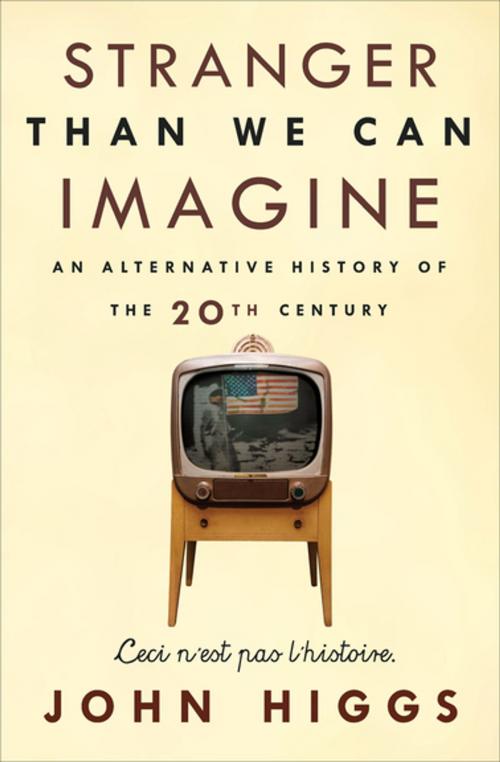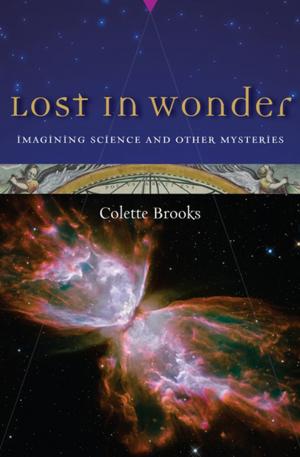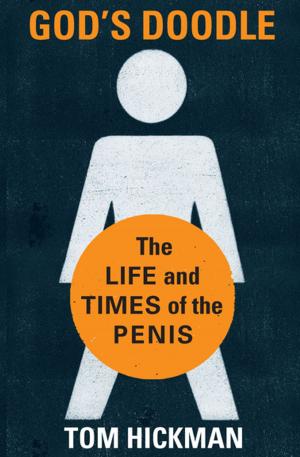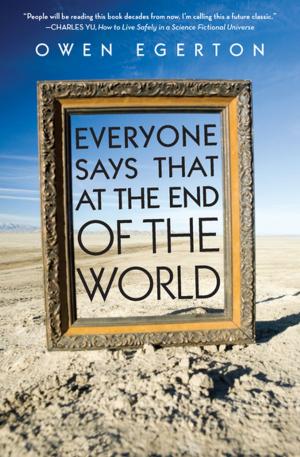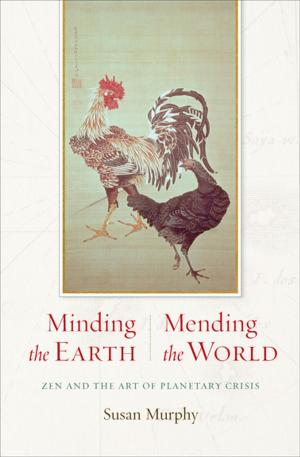Stranger Than We Can Imagine
An Alternative History of the 20th Century
Nonfiction, History, Modern, 20th Century| Author: | John Higgs | ISBN: | 9781619026803 |
| Publisher: | Counterpoint Press | Publication: | November 1, 2015 |
| Imprint: | Soft Skull Press | Language: | English |
| Author: | John Higgs |
| ISBN: | 9781619026803 |
| Publisher: | Counterpoint Press |
| Publication: | November 1, 2015 |
| Imprint: | Soft Skull Press |
| Language: | English |
The extraordinary story of the twentieth century, as told from the furthest fringes of science, art, and culture.
Before 1900, history was an account of great discoveries that actually made sense. People understand innovations like the steam engine, agriculture, or electricity. The twentieth century, by contrast, gave us quantum entanglement, cubism, relativity, psychedelics, postmodernism, chaos maths, and the Somme.
This is the story of that confusing century as told through the ideas produced at the furthest fringes of our sciences, arts, and culture. Its cast includes well-known geniuses such as Albert Einstein, Francis Crick, and Pablo Picasso, lesser known geniuses like Edward Lorenz, Sergey Korolyov, or Shigeru Miyamoto, and infamous but influential ne’er-do-wells like Timothy Leary, Aleister Crowley and Keith Richards. In this company we take a tour through ideas as strange as general relativity, DNA, the subconscious, Gaia theory, and Dada.
In this brilliantly written and original book, John Higgs explores, with great clarity and wit, the extremes of twentieth century thought, and in doing so shows how a world of empires became a world of individuals. You will never see the twentieth century in the same way again.
“An illuminating work of massive insight.” —Alan Moore, author of V for Vendetta
“A beautiful, erudite, funny and enlightening tour of the widening boundaries of uncertainty revealed in the twentieth century.” —Robin Ince
“Hugely entertaining and thought-provoking.” —Scott Pack
“To paraphrase Colonel Kurtz, reading John Higgs is like being shot with a diamond. Suddenly everything becomes terrifyingly clear.” —Mojo
“In Stranger Than We Can Imagine, John Higgs broadens his intellectual reach to encompass modernism, situationism, chaos theory, indeterminacy and almost every other byway of that epoch. . . . A fine example of learning worn lightly.” —New Scientist
The extraordinary story of the twentieth century, as told from the furthest fringes of science, art, and culture.
Before 1900, history was an account of great discoveries that actually made sense. People understand innovations like the steam engine, agriculture, or electricity. The twentieth century, by contrast, gave us quantum entanglement, cubism, relativity, psychedelics, postmodernism, chaos maths, and the Somme.
This is the story of that confusing century as told through the ideas produced at the furthest fringes of our sciences, arts, and culture. Its cast includes well-known geniuses such as Albert Einstein, Francis Crick, and Pablo Picasso, lesser known geniuses like Edward Lorenz, Sergey Korolyov, or Shigeru Miyamoto, and infamous but influential ne’er-do-wells like Timothy Leary, Aleister Crowley and Keith Richards. In this company we take a tour through ideas as strange as general relativity, DNA, the subconscious, Gaia theory, and Dada.
In this brilliantly written and original book, John Higgs explores, with great clarity and wit, the extremes of twentieth century thought, and in doing so shows how a world of empires became a world of individuals. You will never see the twentieth century in the same way again.
“An illuminating work of massive insight.” —Alan Moore, author of V for Vendetta
“A beautiful, erudite, funny and enlightening tour of the widening boundaries of uncertainty revealed in the twentieth century.” —Robin Ince
“Hugely entertaining and thought-provoking.” —Scott Pack
“To paraphrase Colonel Kurtz, reading John Higgs is like being shot with a diamond. Suddenly everything becomes terrifyingly clear.” —Mojo
“In Stranger Than We Can Imagine, John Higgs broadens his intellectual reach to encompass modernism, situationism, chaos theory, indeterminacy and almost every other byway of that epoch. . . . A fine example of learning worn lightly.” —New Scientist
